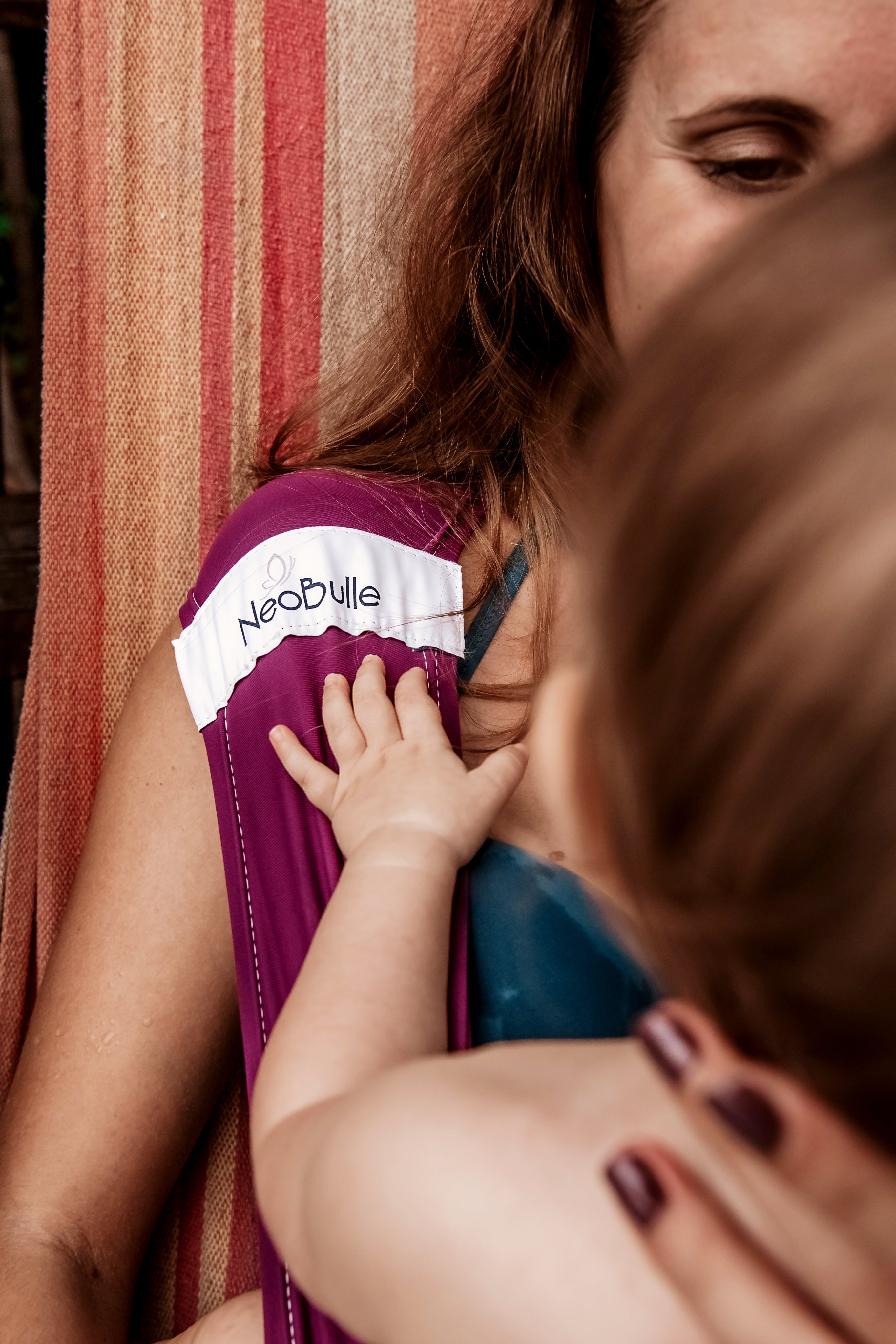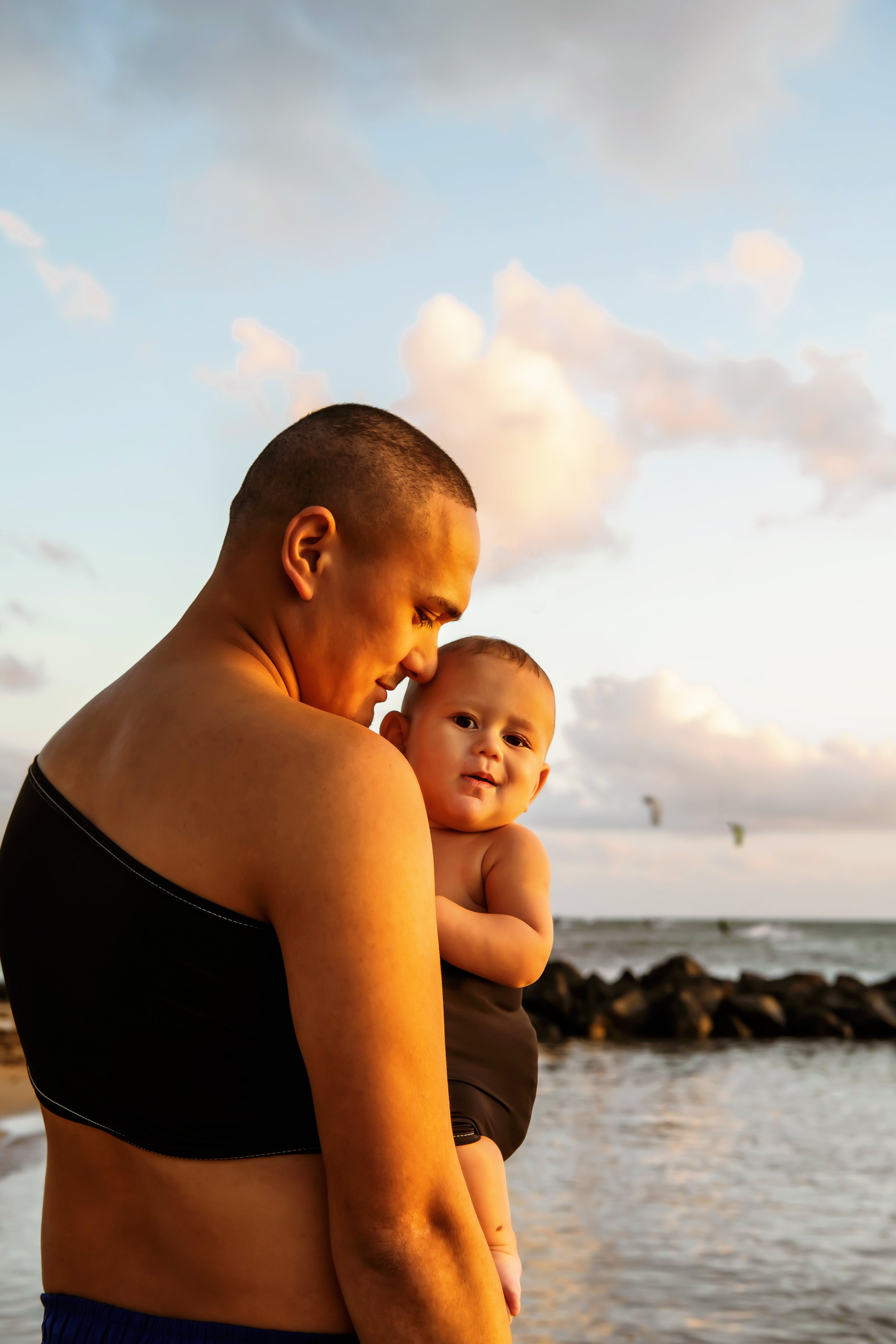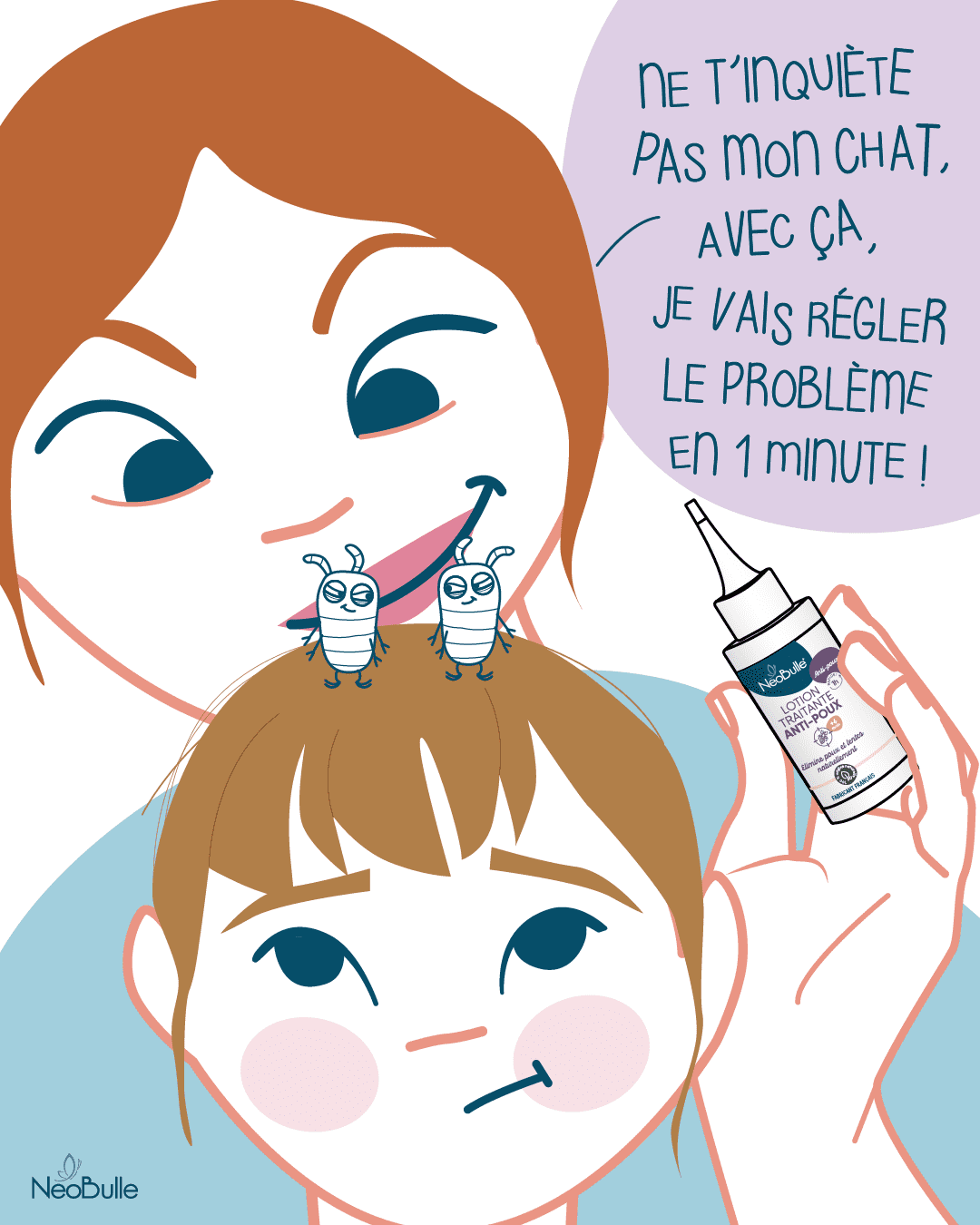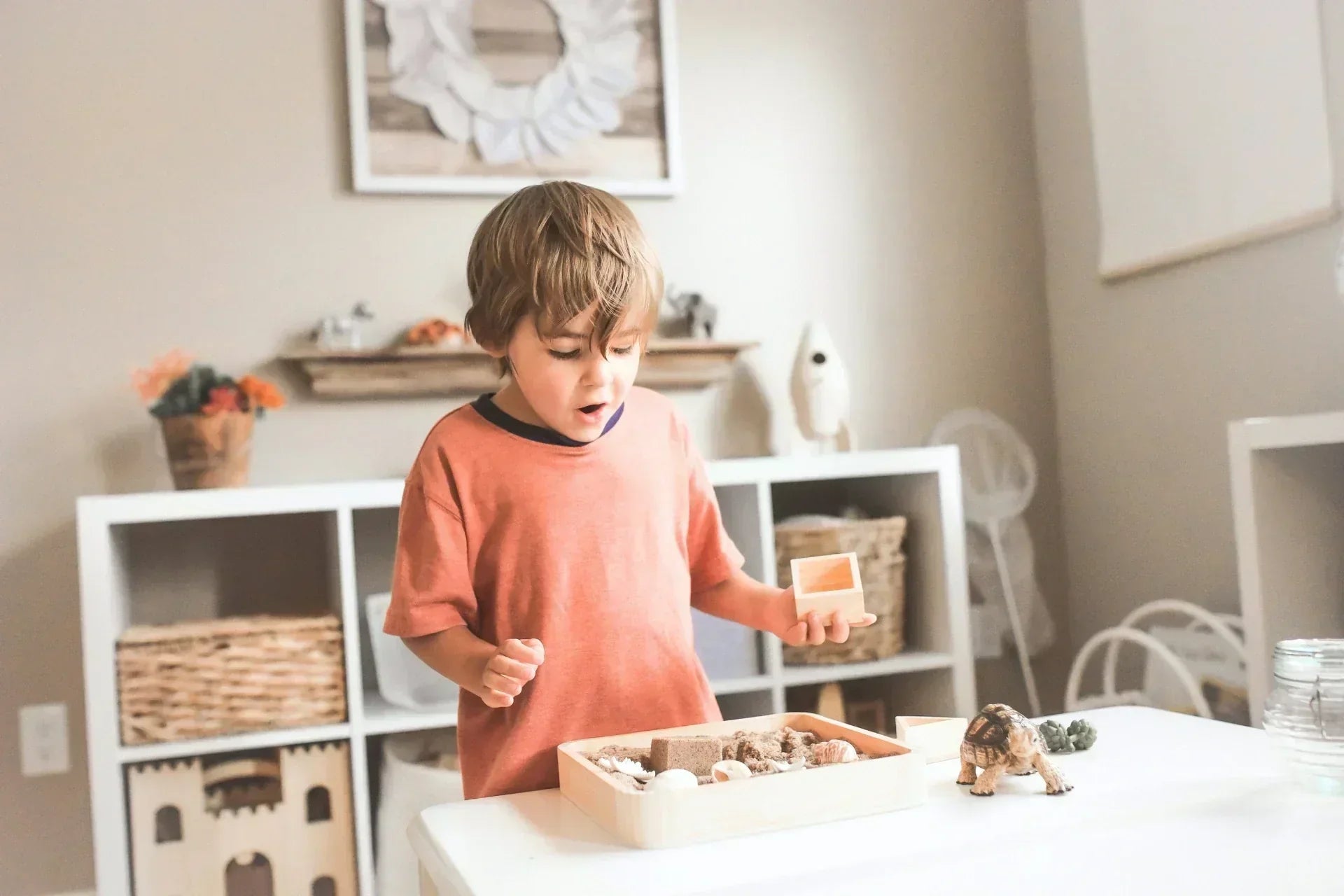“Lice have been reported in the classroom, please check your children's heads.”
This little note in your child's notebook triggers a tachycardia attack doubled by a furious urge to scratch your head and disinfect the entire house to get rid of the invader?
Don't panic, put away that hair clipper, and let's take the time together to see how to face the situation!
1 – Some general information about lice

Lice (Pediculus humanus capitis for their scientific name), are parasites of humans. As for us, we will only talk here about those that live in the hair, but some can also live in body hair (morgellons) or on the body (less common). They measure about 2 to 4mm and feed on blood, their bites causing significant itching (related to their saliva).
If an infestation does not pose a danger to health by itself, prolonged situations where scratching occurs can eventually lead to infection.
During its life cycle, the lice go through several stages of development:
- J0 : laying an egg (the nit) at the root of the hair
- J7-8 : hatching
- Between J10 and J17 approximately : the larva goes through 3 successive molts
- J17-18 : first possible mating
- From J18 until the end of its life around J50 : females can lay up to 8-10 eggs per day
We spare you the calculations:
- During its lifetime, a single female louse can lay up to 300 eggs!
- Each egg once laid can generate a mature louse capable of mating in about 3 weeks.
Dizzying, isn't it? It quickly becomes clear why it is better to take the problem in hand as quickly as possible!
2 – Identifying the infestation

How to tell if your child has lice? Often at the beginning, there is not much visible, and you have to wait until proliferation has started to realize that your little one scratches his head a bit frantically, mainly around the neck or behind the ears.
A more careful examination of the scalp can reveal small red spots on the skin of the scalp, nits
(about 0.5 to 1mm, yellowish or grayish in color while the egg is full, then white once the larva has emerged), or even lice that are walking around…Distinguishing between nits and dandruff is sometimes not easy. Dandruff are not attached to the hair, and can be easily removed with your fingers or a brushing. Nits, on the other hand, are firmly glued to the hair.
In case of lice alert in a setting frequented by your child, it is highly recommended to check their scalp, or even preventively use a fine-tooth comb throughout their hair to remove any unwanted lice before they start reproducing!
It should be noted that, contrary to popular beliefs, an infestation is not at all related to poor hygiene.

3 – What to do if you find lice on your child?
The time when they shaved their head is fortunately over! And chemical and aggressive products are now forbidden (potentially harmful, lice have developed resistance anyway…)
Smother nits and lice with an appropriate product
At Nébulle, we offer a lice treatment lotion, made from ingredients derived from coconut oil. It contains no insecticides, fragrances, or essential oils, and its primary action is mechanical:
- it blocks the respiratory openings of lice and nits, suffocating them.
- During rinsing, lice and nits lose their fluids, which kills them through desiccation.
Applied carefully over the entire scalp (not wet), it is enough to leave it on for 1 hour before using a fine-tooth comb and rinsing.
Attention: the application time is calculated from the moment the lotion dries, you can use a blow dryer to speed up the process.
Use a fine-tooth comb
The fine-tooth comb is a comb with very close teeth that allows you to remove lice and nits from the hair.
For an effective pass, it is recommended to thoroughly comb the entire hair and to start from the scalp. You can use clips or hairpins to identify areas remaining to be combed.
Regularly passing the comb is also an effective technique to get rid of lice, but it requires a bit of patience.
! Indeed, this requires using it long enough to have:- Eliminated all adults capable of laying eggs
- Eliminated all larvae from previously laid nits before they are able to reproduce
If you followed the above, the development cycle of the lice taking about 3 weeks, this means you should commit to daily treatment for at least this period…
This also requires being sufficiently diligent not to miss any areas.
Treat the environment
Lice do not survive very long away from a head (about 36 hours), and they do not detach from hair when still alive. Environmental transmission is therefore quite limited.
Nonetheless, it is recommended to wash bed sheets and pillowcases at 60°C, the same goes for other surfaces in contact with hair : car seat covers, hats… You can also consider disinfecting the hairbrush to prevent recontamination, using for example our Deo Couches spray!
Note that if something cannot be washed at 60°C, it can be replaced by either placing it in the freezer for 8 hours or leaving it in a sealed bag for 48 hours.
Inspect the whole family
Since family cohabitation is a major factor of infestation, it is strongly advised to inspect and comb all heads in the household when one of the residents shows signs of lice!
Lice can colonize everyone and not just children: babies, teenagers, adults, elderly… As long as there are hair, lice can be present.
Sooth the scalp
Bites and scratching can cause scalp irritations. Alongside treatment products, using a soothing shampoo can help relieve discomfort!
4 – Avoid lice!
Better to prevent than to cure… Although it can sometimes be difficult to completely eliminate, we can significantly reduce the risk of infestation with a few simple gestures:
- Tie long hair in a ponytail or braids
- Use different brushes and combs for each of your children
- Encourage your children to not exchange hats with friends
- Apply a little of preventive anti-lice oil
There you go, you now know everything about these infernal creatures! Stay strong, parent team, and we wish you encounter them as little as possible!






